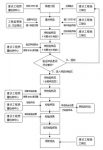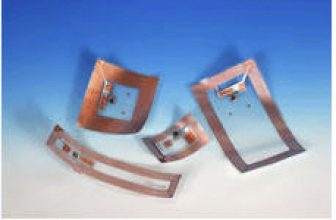
RFID electronic tags: construction project quality inspection shows great power
[ad_1]
Construction project quality inspection is a technical means for effective supervision of project quality. Various engineering testing agencies are entrusted by the government and the public to provide fair, scientific and accurate testing data by testing the structural entities of the engineering project and the various building materials and components used in the construction process, so as to provide Provide basis for quality supervision and safety supervision.
The problem of engineering quality inspection
At present, in order to reduce costs, evade inspections, and catch up with the construction period, some construction companies often use shoddy building materials to obtain illegal income, causing “tofu dregs projects” and posing a great threat to people’s lives and properties. In the process of submitting building materials samples for inspection before the construction materials are put into use, some construction units often conduct illegal operations, resorting to fraud, stealing beams and replacing posts, etc., to defraud inspection agencies of qualified building materials inspection reports. Due to the regulatory vacuum in the inspection of building materials, the effectiveness of the methods of controlling the quality of building materials through building materials inspection and then controlling the quality of construction projects is threatened. Therefore, how to ensure that testing agencies provide fair, scientific and accurate testing data to the public in an open market competition environment is a thorny issue facing construction administrative departments at all levels.
RFID radio frequency identification is a non-contact automatic identification technology. It automatically recognizes the target object and obtains relevant data through radio frequency signals. The identification work does not require manual intervention and can be used in various harsh environments. Radio frequency products are resistant to oil stains and dust pollution. The characteristics of the environment are better than barcodes. The use of RFID technology to detect the quality of the project can improve the authenticity of the detection work, avoid human intervention, and improve work efficiency. Kaitai R&D and Production Center and Guangzhou Yuejian Sanhe Software Co., Ltd. combine RFID technology with “3H General Engineering Quality Inspection Management Information System” according to the actual work of the engineering quality inspection agency to form a complete set of “construction engineering quality RFID technology application solutions in the detection industry”. The following is a specific analysis of the application of RFID technology in the construction project quality inspection industry based on an application case of a construction project quality inspection center in a certain city in Guangdong Province.
RFID technology improves the quality of engineering quality inspection
The construction engineering quality inspection center of a certain city in Guangdong province has 4 branch inspection agencies, which are mainly responsible for the municipal engineering quality inspection, technical arbitration, technical certification, and information exchange. The testing items cover building materials, indoor environment, foundation, structure, equipment and other fields. The center provides testing data for construction projects in the city to ensure the quality and safety of construction projects. Since 2001, the center has applied the “3H General Engineering Quality Inspection Management Information System” as the testing center business management system, and has basically realized the informationization of the office management of the center. Business management has realized the automatic collection of test data and the internal networking of the central station and various branches.
Apply RFID technology to optimize business processes
After the introduction of RFID technology, the inspection process of building component samples is standardized, which greatly guarantees the authenticity and uniqueness of the building component samples submitted for inspection. This effectively avoids the occurrence of illegal operations by construction units, stealing beams and replacing columns, and fraudulently obtaining qualified building materials inspection reports from inspection agencies. The detection process is shown in Figure 1.
First, RFID electronic tags will be issued, and the RFID electronic tags written into the construction project quality inspection center will be issued to the construction companies.
Under the supervision of the construction project supervision unit and the witness inspection personnel, the construction enterprise will implant the electronic label into the building material sample (2~3 cm below the intersection of the diagonal line on the front of the concrete test block, the electronic label should be parallel to the surface of the sample) to make building materials Check the sample. This link mainly supervises the construction companies to make inspection samples of building materials to avoid problems with the samples sent by the construction companies.
Construction companies will send samples of building materials implanted with RFID electronic tags to the Construction Engineering Quality Inspection Center for inspection. The inspector uses the RFID reader to scan the building material sample, read out the electronic tag information, and verify the authenticity of the building material sample and whether it meets the requirements of the testing center. For samples that pass verification, the “3H General Engineering Quality Inspection Management Information System” automatically sends the sample code to the sample waiting area for inspection; the unqualified samples are returned to the construction unit. This link verifies the authenticity of building materials samples and prevents false samples from flowing into the testing center.

According to the process regulations, the reviewer of the testing center again uses the reader to scan the building material samples implanted in the subtag, and after reviewing the relevant data, the building material samples are sent to the building material inspector for inspection.
The inspectors of the testing center inspect the rechecked samples, and the inspection data are automatically transmitted to the “3H General Engineering Quality Inspection Management Information System”. The system calculates according to the relevant national standards and regulations, and gives the normative conclusions of the building materials samples. In the link of review and approval of inspection results, auditors of the testing center will review the results of building materials inspection, and the approvers will approve the results of building materials inspection, and the system will automatically generate a building material inspection report. Finally, notify the construction company to receive the building material inspection report.
Selection of equipment
During the inspection process, the electronic tags implanted in the building materials samples required waterproof and moisture-proof. After a number of product verifications and selections, the RFID electronic tags independently developed by Kaitai Technology were finally adopted. The label has the characteristics of small size, long identification distance, waterproof, etc., and meets the conditions of use for sample inspection of building components.

The reader uses the CS8210 handheld data acquisition terminal independently developed by Kaitai Technology. This product has the characteristics of simple operation, convenient use, and sensitive card reading. It is suitable for the needs of building component management.

The application of RFID technology in the field of construction project quality inspection strictly eliminates the fraudulent behavior of building materials inspection by construction enterprises, effectively helps the construction administrative department to supervise the quality of construction projects, improves the work efficiency of project quality inspection agencies, and strengthens the quality supervision of key projects Intensity. In the future, with the continuous improvement of RFID technology and the integration of various national standards, its application will be more extensive. For example, in the construction industry, RFID can also be embedded in building materials such as marble, glass, sanitary ware, and prefabricated components for anti-counterfeiting and tracking of products. RFID electronic tags can be used for process management in production, and each process is written into a readable and writable electronic tag until the finished product, which is used as the basis for inspection during inspection, so as to ensure the quality of the finished product. While realizing scientific management, RFID guarantees the safety of people’s lives and property, and will definitely have a profound impact on people’s lives.
[ad_2]





